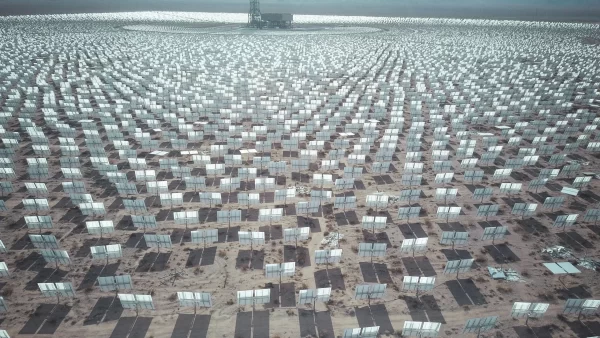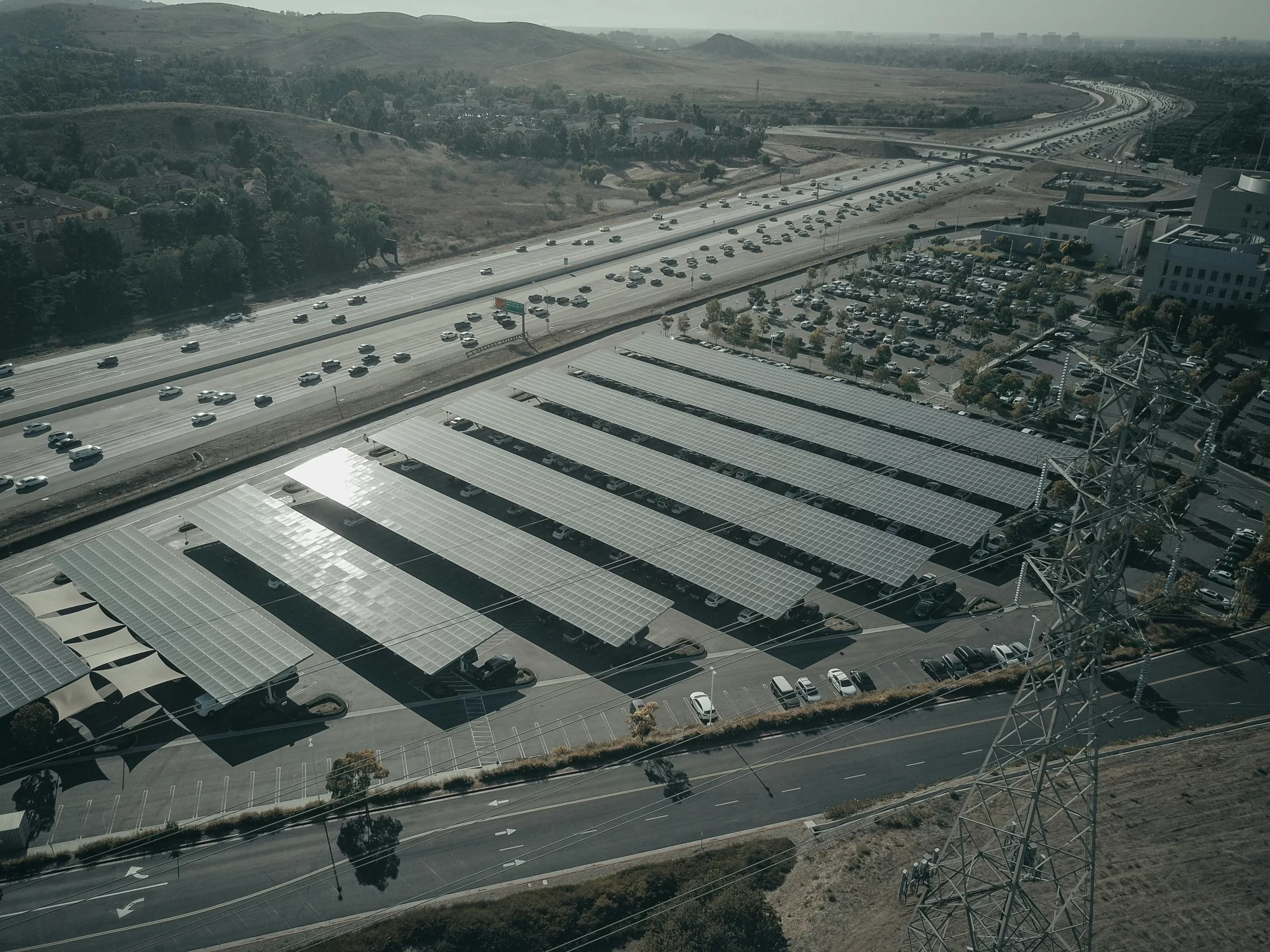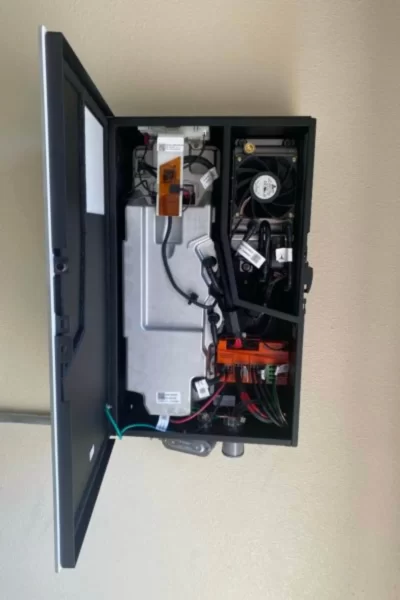
What is Solar Power and Why You Should Know
Did you know that in just one hour, our planet receives more energy from the sun than the entire world uses in a year?
Every day, the sun showers our planet with an immense amount of solar energy. Imagine harnessing a fraction of that energy directly from your rooftop to power your home. This solar power becomes a source of electricity for all your appliances—your TV, refrigerator, and more. That’s the power and potential of solar panels.
In this article, you’ll learn what solar power is, how it works, and why it’s a game-changer for homeowners like you. Let’s dive in!

The Science Behind Solar Power
What is Solar Energy?

Solar power is the conversion of energy from the sun into electricity. The sun has been producing energy for billions of years, making it the most important source of energy for life on Earth. Unlike non-renewable sources such as fossil fuels, solar energy is clean, abundant, and sustainable.
How Does Solar Power Being Created?
The sun’s light contains energy. When sunlight strikes an object, the energy turns into heat, like the warmth you feel while sitting in the sun. Through the use of solar equipment, this energy is captured and converted into electricity or heat.
The key components of a solar power system include:
- Solar Panels: Devices that convert sunlight into electricity using photovoltaic (PV) cells.
- Solar Inverters: These act as translators, converting the Direct Current (DC) electricity produced by solar panels into Alternating Current (AC), which is used by most home appliances.
The Components of a Solar Power System
Solar energy is abundant and clean, but it requires specialized equipment to convert sunlight into usable electricity. Let’s explore how these systems work together to power homes, businesses, and communities efficiently.
Solar panels, made up of photovoltaic (PV) cells, are the foundation of any solar energy system. These cells, typically composed of silicon, absorb sunlight and convert it into direct current (DC) electricity through the photovoltaic effect.
How It Works:
When sunlight hits the PV cells, photons energize electrons, freeing them from atoms.
An electric field within the cell directs these electrons, creating a flow of electricity.
Multiple cells are wired together in a panel, and multiple panels form an array to generate sufficient power.


Since most homes and businesses run on alternating current (AC), solar systems need inverters to transform the DC electricity generated by panels.
Types of Inverters:
String Inverters: Cost-effective for standard installations.
Microinverters: Attached to each panel, optimizing performance even in shade.
Hybrid Inverters: Allow integration with battery storage for backup power.
Types of solar systems
Not all solar power systems are the same. Depending on your needs and location, you can choose from the following types:
- Grid-Tied Systems – These systems are connected to the local utility grid. When your solar panels produce more electricity than you need, the excess energy is sent back to the grid. In return, you earn credits through a process called net metering.
Best For: Homeowners who want to reduce their electricity bills while maintaining a connection to the grid for backup power.
- Off-Grid Systems – These systems are completely independent of the utility grid. They rely on solar batteries to store excess energy for use at night or during cloudy days.
Best For: Remote areas where grid connection is unavailable or unreliable.
- Hybrid Systems – These systems combine the benefits of grid-tied and off-grid systems. They are connected to the grid but also include battery storage for backup power during outages.
Best For: Homeowners who want energy independence and protection against power outages.
How Does This Article Benefit You As A Homeowner?
As a homeowner, you’ve likely noticed that your utility bills keep rising. In 2022, residents of states like Hawaii, Connecticut, and Alabama faced some of the highest average monthly utility costs in the U.S. On average, homeowners paid:
- Electricity: $121.01 per month
- Gas: $63.42 per month
- Water: $45.44 per month
Switching to solar energy can help you take control of electricity costs. Research shows that the average household in the U.S. could save up to $1,390.22 per year by installing a properly sized solar panel system. That’s over $115 in monthly savings!
But the benefits don’t stop there. Solar power also:
- Increases Your Home’s Value: Homes with solar panels sell for 4.1% more on average.
- Reduces Your Carbon Footprint: Solar energy is clean and renewable, helping you contribute to a greener planet.
- Provides Energy Independence: Protect yourself from rising energy costs and grid outages.
Prime Energy Solar As A Solar Power Company in Connecticut
At Prime Energy Solar, we’re dedicated to helping homeowners like you achieve solar independence. With years of experience, a wide range of partners, and glowing customer reviews, we’re here to guide you every step of the way.
Our services go beyond solar. We also partner with experts in HVAC and roofing, ensuring your home is energy-efficient from top to bottom.
Ready to take the first step toward a brighter, more sustainable future? Contact Prime Energy Solar today and experience the beauty of solar energy for yourself!
Conclusion
Solar power is more than just a trend—it’s a smart, sustainable solution for homeowners looking to save money and protect the planet. By harnessing the sun’s energy, you can:
- Slash your utility bills by thousands of dollars over time.
- Increase your home’s value with a modern, energy-efficient upgrade.
- Enjoy energy independence and peace of mind.
Don’t wait for rising energy costs to drain your wallet. Switch to solar today and start reaping the benefits. Contact Prime Energy Solar now to begin your journey toward solar independence!
Articles you might like
Check out our other pages
Need assistance?
- Contact us here
- Call us – 203-408-2440
- Business Hours – 9am to 5pm Mon-Fri
FAQ
Check out our most frequent solar power questions here.
Solar energy is crucial for building a sustainable future while addressing pressing environmental and economic challenges. Unlike fossil fuels, solar power generates electricity without emitting greenhouse gases or harmful pollutants, making it a clean alternative that helps combat climate change. The sun provides an inexhaustible energy source, ensuring long-term sustainability compared to finite resources like coal and oil. Economically, solar energy reduces electricity costs for homeowners and businesses while creating jobs in renewable energy sectors. Additionally, by adopting solar power, nations can decrease their dependence on imported fuels, enhancing energy security and independence.
Solar energy offers numerous benefits for homeowners, businesses, and the planet:
- Clean & Renewable– Sunlight is an abundant resource, available almost everywhere.
- Cost Savings– Solar panels reduce electricity bills, and with falling prices, they’re more affordable than ever.
- Low Maintenance– Once installed, solar systems require minimal upkeep and last 25+ years.
- Energy Reliability– With battery storage, solar power can provide electricity even during grid outages.
While all renewable energy sources have unique advantages, solar power stands out due to its versatility, scalability, and environmental benefits. Unlike wind or hydropower, solar energy can be harnessed in almost any location, from residential rooftops to large-scale solar farms. It produces zero emissions during operation, helping to reduce air pollution and slow global warming.
Technological advancements, such as high-efficiency photovoltaic cells and improved battery storage, continue to enhance solar energy’s reliability and affordability. However, a balanced energy mix—combining solar with wind, geothermal, or hydropower—can create a more resilient and sustainable energy grid.
Think of solar energy as the raw sunlight that beams down on Earth every day – it’s the abundant, natural resource that contains incredible potential. Solar power, on the other hand, is what we create when we harness that energy and convert it into usable electricity through technologies like solar panels.
In simple terms:
- Solar energy= The sun’s radiant light and heat (the source)
- Solar power= The electricity we generate from that sunlight (the output)
Solar energy is renewable because the sun isn’t going anywhere! Unlike fossil fuels (which take millions of years to form and are being depleted rapidly), sunlight is an endless, self-replenishing resource. Every morning, the sun rises, delivering a fresh supply of clean energy – no drilling, mining, or harmful emissions required.
Plus, solar power systems don’t “use up” sunlight—they simply convert it into electricity while leaving the environment unharmed.
Solar energy stands out as one of the most sustainable power sources available today. Unlike finite fossil fuels, sunlight is an inexhaustible resource—the sun delivers more energy to Earth in a single hour than humanity consumes in an entire year. Solar panels convert this abundant energy into electricity without emitting greenhouse gases or producing air pollution, making them a clean alternative to traditional power plants.
With a lifespan of 25 years or more and minimal maintenance requirements, solar systems offer long-term reliability while reducing strain on the environment. As technology advances and costs continue to fall, solar energy is becoming increasingly accessible, paving the way for wider adoption across homes, businesses, and industries. By harnessing the sun’s power, we’re not just generating electricity—we’re building a cleaner, more sustainable future for generations to come.
Contact Us
25 Eastern Steel Road
Milford, CT, United States
(+1) 203-408-2440
info@primeenergysolar.com
marketing@primeenergysolar.com
If you are a reporter looking for information on media services please contact us at:
marketing@primeenergysolar.com
